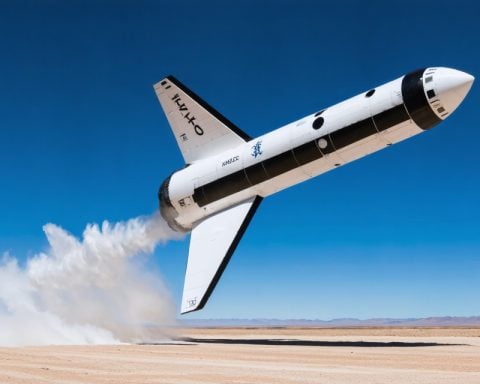- The transformation in space travel is driven by the need for advanced propulsion systems.
- Key factors influencing propulsion choices include spacecraft weight, destination, and atmospheric drag.
- ThrustMe plans to launch 200 systems by the end of the year, introducing an iodine-powered product in 2026.
- Juno Propulsion is focused on creating greener propulsion solutions and enhancing fuel efficiency.
- In-orbit refueling remains a developing concept, with some companies exploring its potential.
- Future innovations may include eco-friendly propellants like water, providing sustainable options for propulsion.
- The necessity for innovation in propulsion technology is critical as space exploration continues to evolve.
The quest for the ultimate propulsion system is igniting a multi-billion dollar transformation in space travel. As spacecraft become essential to our exploration of the cosmos, the right propulsion choice is crucial—not just financially, but also strategically. Factors like spacecraft weight, destination, and the necessity to conquer atmospheric drag play pivotal roles in decision-making.
Visionaries like Dr. Ane Aanesland, CEO of ThrustMe, are pushing boundaries. In a groundbreaking evolution of the market, she notes that her company plans to deploy 200 systems into orbit by year’s end. Excitingly, they’re set to unveil an iodine-powered product in early 2026, a potential game-changer for the industry.
Meanwhile, Juno Propulsion, led by Dr. Alexis Harroun, is striving for greener propulsion solutions. While some in the industry still clamor for traditional chemical fuels like Hydrazine, Juno is focused on improving fuel efficiency and reliability. Their innovative designs are set to eliminate risks tied to high-pressure vessels, creating a sound footing for the future.
As industry veterans like Peter Hruby from Busek acknowledge, the idea of in-orbit refueling remains nascent, with current demand still catching up. Yet, pioneers like Dr. Jun Asakawa at Pale-Blue are already envisioning a future powered by water—the ultimate eco-friendly propellant.
The takeaway? As space exploration advances, innovation in propulsion technology is not just necessary; it’s inevitable. Buckle up for a thrilling journey as we pave the way for a sustainable space age!
The Future of Space Travel: Breakthroughs in Propulsion Technology
The Evolution of Space Propulsion Systems
The quest for the ultimate propulsion system is transforming space travel, presenting not just financial, but strategic implications for the future of aerospace exploration. With spacecraft becoming pivotal in our journey into the cosmos, selecting the right propulsion method hinges on various factors, including spacecraft weight, mission destination, and overcoming atmospheric drag.
Amidst this rapid transformation, several innovative companies are pushing the boundaries of propulsion technology.
Innovative Developments in Propulsion
– ThrustMe: Under the leadership of CEO Dr. Ane Aanesland, ThrustMe plans to deploy 200 propulsion systems into orbit by the year’s end. Notably, they are set to launch an iodine-powered propulsion system in early 2026, which could significantly alter the propulsion landscape by utilizing a non-toxic and efficient propellant.
– Juno Propulsion: Led by Dr. Alexis Harroun, Juno is committed to providing greener propulsion solutions. Their focus on improving fuel efficiency and designing systems that eliminate the dangers associated with conventional high-pressure vessels marks a significant shift towards more sustainable practices in the industry.
– Pale-Blue: Innovators like Dr. Jun Asakawa at Pale-Blue are pioneering the concept of using water as a propellant, heralding an eco-friendly future for space travel.
Key Market Trends and Expectations
The space propulsion market is expected to grow significantly. Analysts predict advancements in technologies such as electric propulsion, ion thrusters, and those utilizing green propellants will play vital roles in the future. With the rise of commercial space endeavors, the demand for high-efficiency and environmentally sustainable propulsion is anticipated to surge.
Three Important Related Questions
1. What are the advantages of iodine-based propulsion over traditional systems?
Iodine propulsion offers numerous benefits, such as being non-toxic, easy to store, and potentially providing higher efficiency and thrust levels compared to traditional chemical propellants. This innovation can lead to safer and more cost-effective space missions.
2. How does in-orbit refueling impact the future of space missions?
In-orbit refueling presents an opportunity to extend the range and duration of missions, allowing spacecraft to perform longer exploratory missions without the constant need to return to Earth for fuel. This could significantly reduce mission costs and open new frontiers for space exploration.
3. What are the sustainability challenges faced by the space propulsion industry?
As the number of launches increases, the environmental impact of rocket emissions and debris becomes a growing concern. The industry faces the challenge of developing sustainable propulsion technologies that minimize ecological footprints while ensuring mission success.
Conclusion
As space exploration continues to advance, innovation in propulsion technology becomes not just necessary, but an inevitable part of forging a sustainable future in the cosmos. The developments in iodine-powered propulsion and green solutions represent a crucial turning point and could reshape our understanding of space travel.
For further insights into the evolving market, visit Space Daily for the latest trends and technologies in space propulsion.









